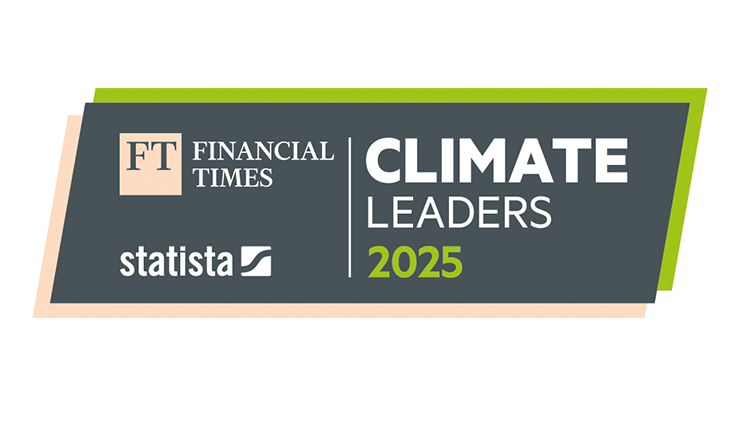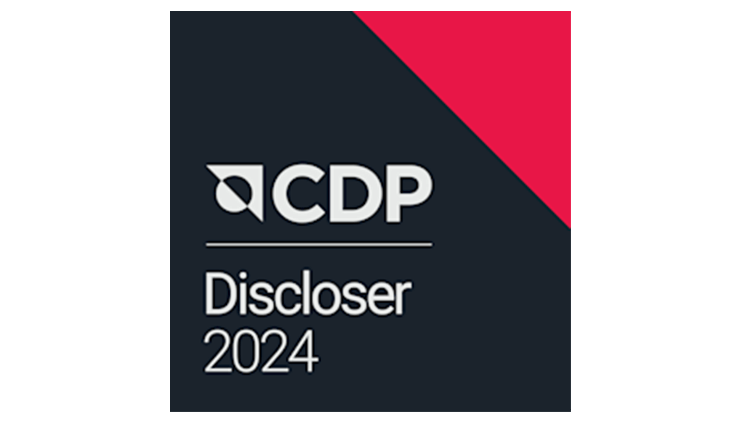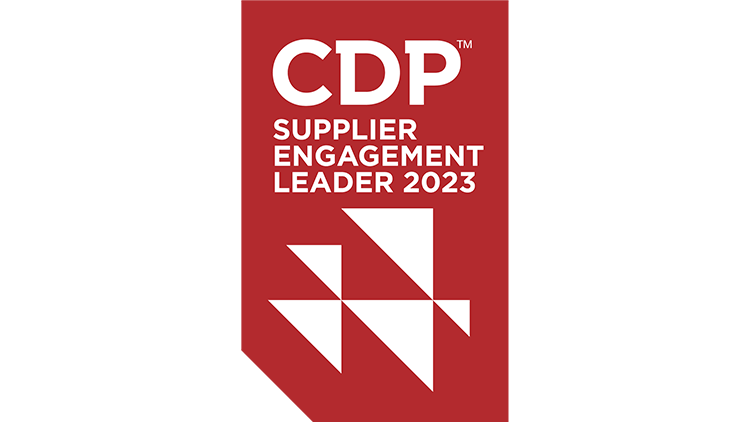At Experian we’re committed to helping tackle climate change and reducing our impact on the environment.
As a global data and technology company, our most material environmental impact is the carbon footprint of our operations and value chain. To reduce this impact, we have science-based targets and, decarbonisation roadmaps across our regions focusing on areas such as renewable energy procurement, energy efficiency, single-use plastics and supplier engagement.
Head to our Sustainability reporting hub to find our latest performance data and our TCFD report. You can see our latest CDP (formally Carbon Disclosure Project) climate change disclosure here.

Our climate goals
Our science-based targets provide direction for the level of reduction and pace required to cut emissions from our operations and value chain, as we continue our journey towards Net Zero. Our targets are:
- To reduce our Scope 1 and 2 (market-based) absolute emissions by 50% by 2030 (from 2019). This target has been validated by the Science Based Target initiative (SBTi) and is in line with a 1.5 degree scenario.
- Our Scope 3 target - Suppliers covering 78% of Experian’s spend to have science-based targets by 2029. This target has also been validated by the Science Based Target Initiative (SBTi) and is in line with a well below 2 degrees scenario.
You can view our SBTi validation certificate here.
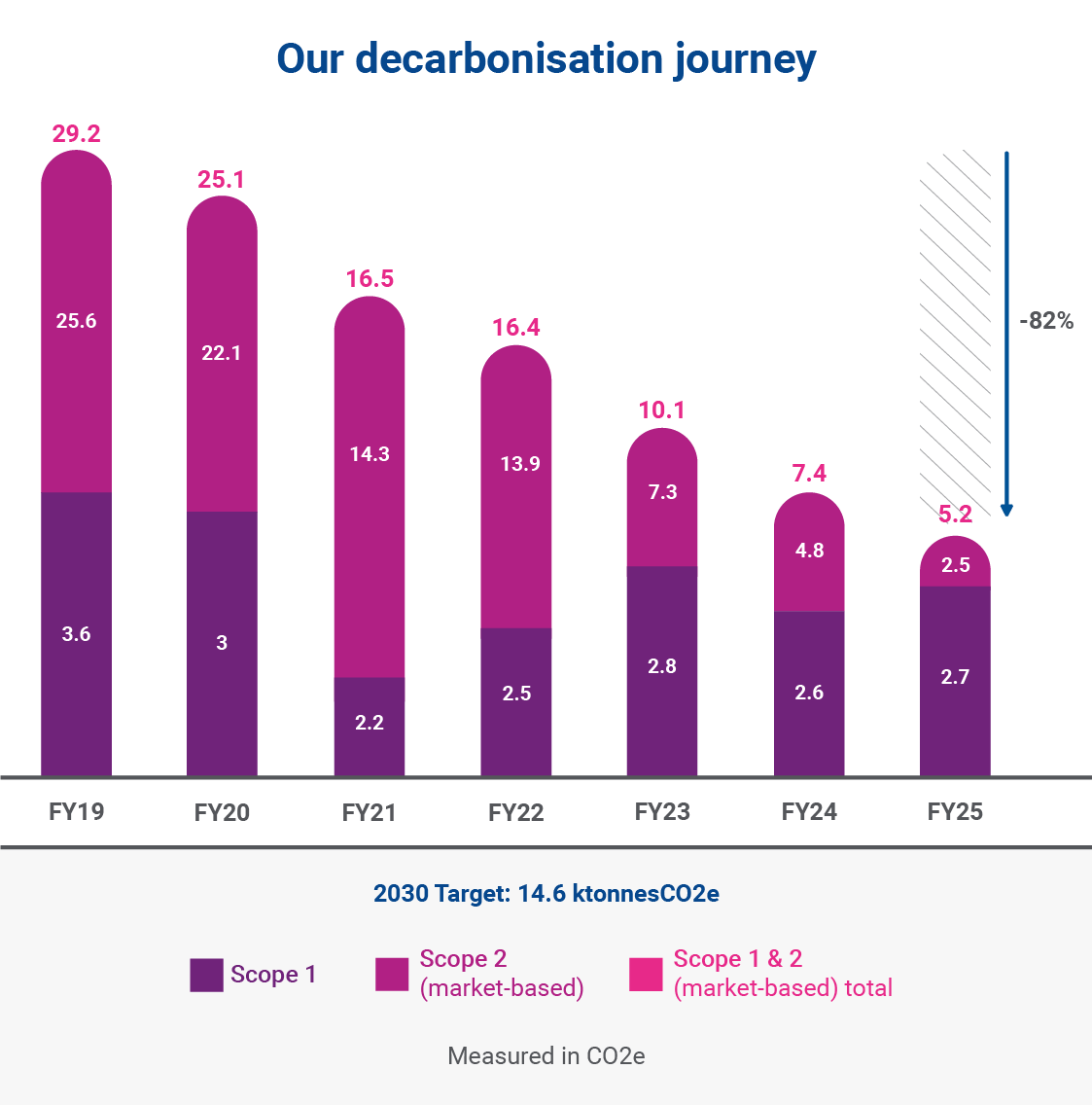
Progress against our goals
In FY25 we reduced our Scope 1 and 2 market-based emissions by a further 30%. Since 2019 we have reduced our total Scope 1 and 2 emissions by 82%, which means we are currently outperforming and well on track to meet our science-based target. We recognise business growth has the potential to impact our performance and we strive to maintain our emission reduction trend.
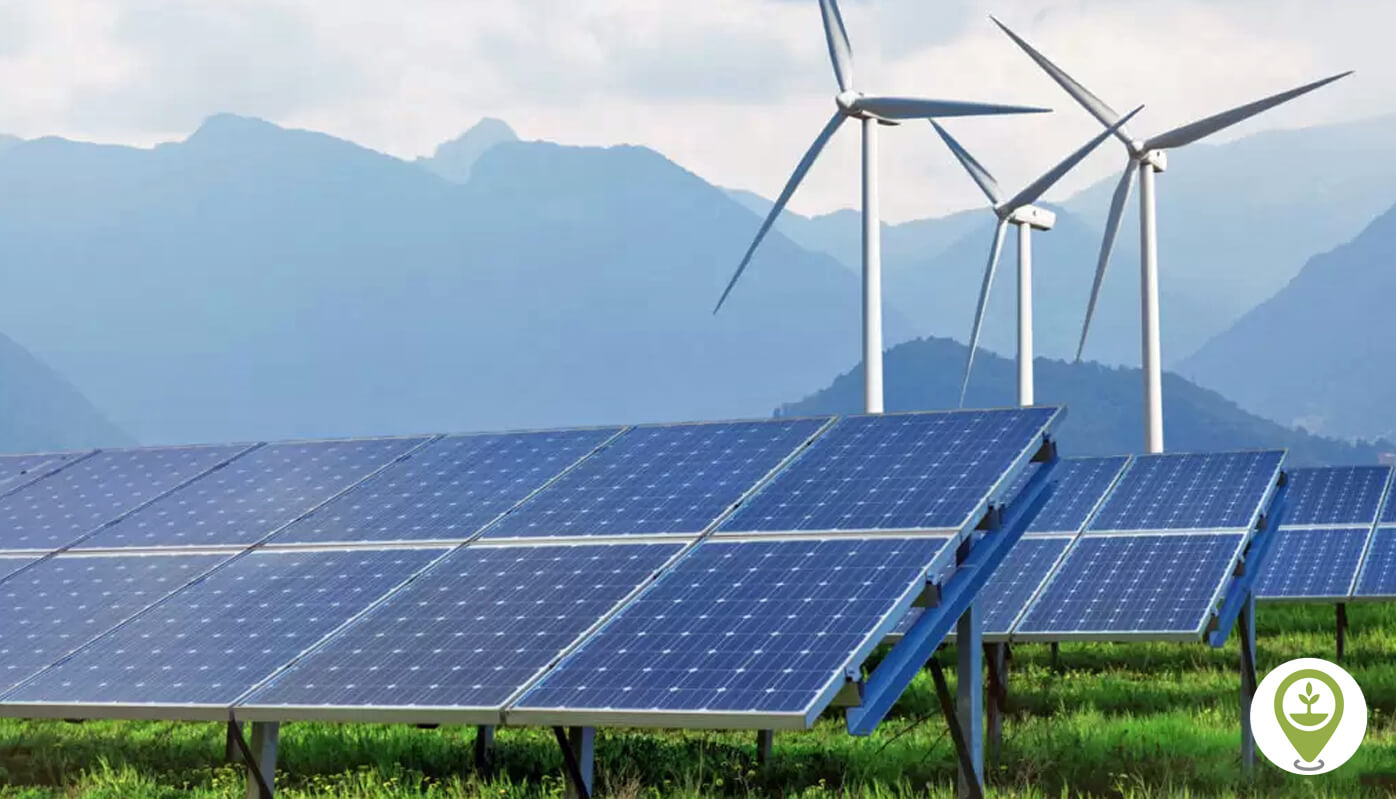
1. Renewable energy
Our aim is to annually increase the percentage of renewably sourced electricity across our operations. This involves a mix of switching to renewable tariffs, purchasing renewable energy certificates (RECs) to match our electricity consumption and on-site generation where feasible.
- In FY25 87% of the total electricity used in our operations was backed by renewable energy certificates or came from renewable sources (up from 75% the previous year).
- Our data centres in North America and the UK and Ireland have been running on electricity backed by RECs since 2022.
- We have solar arrays that generate renewable power at Experian sites in Brazil and India and we are continuing to explore opportunities to invest in further on-site installations where feasible.

2. Supply chain emissions and supplier engagement
Scope 3 greenhouse gas emissions account for the majority (98%) of our total carbon footprint making our supply chain an integral part of our sustainability strategy. As part of our ambition to reduce emissions across our value chain, we want to work with suppliers that share our commitment to sustainability and will collaborate with us to drive climate action.
We’ve made a commitment that 78% of Experian’s suppliers by spend are to have their own science-based target by 2029.
In FY25, suppliers representing 17% of spend agreed to sign a commitment to set targets in the next two years (with an additional 8% under discussion). 4% of those suppliers who signed the commitment, already set a science-based target during FY25, contributing to the increase of total spend with suppliers that have already set targets to 32% in FY25.
To meet our commitment we have established a global roadmap, supported by regional targets, to drive year-on-year progress towards our SBTi target. Some of the ways in which we are taking action are:
- A key mechanism for achieving our Scope 3 target is through the introduction of a Sustainability Commitment in contracts with our largest suppliers that commits them to setting a science-based target and report their GHG emissions to us.
- Continuing to capture supplier emissions data and information through the supplier engagement programme at CDP (Carbon Disclosure Project).
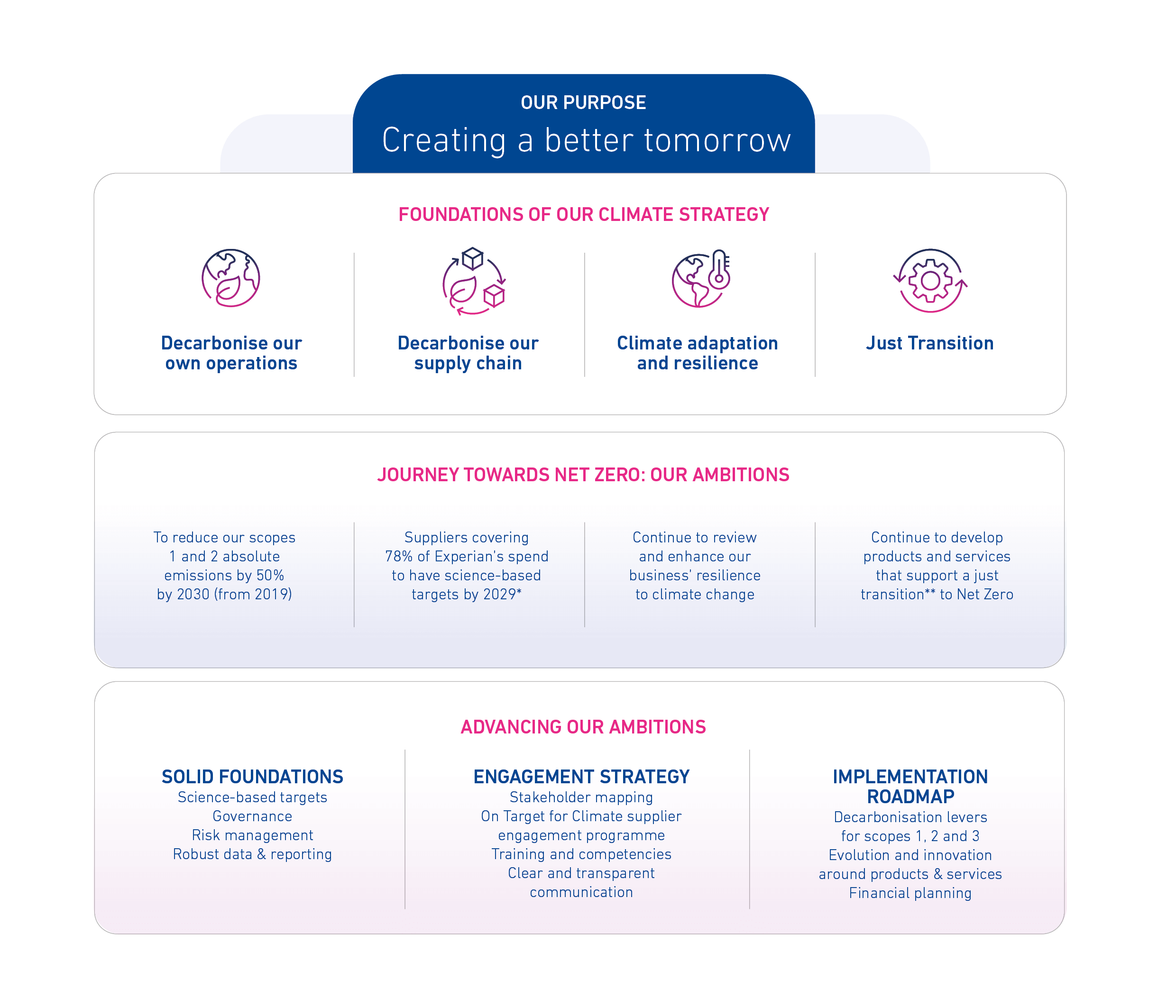
3. Our Net Zero Transition Plan and the foundation of our Net Zero ambition
Learn about how we plan to transition to Net Zero and meet our ambitious targets in our brand new Net Zero Transition Plan.
Our set near-term targets support our journey towards Net Zero and form the first phase of our Net Zero Transition Plan. Our immediate priority is the delivery of this near-term targets, focusing on supplier engagement and decarbonisation in our operations and our supply chain. We are also working to improve coverage and accuracy of supplier emissions data and enhance our capabilities to model our suppliers’ decarbonisation journeys.

4. Single use plastics
We set out an internal ambition and roadmap for phasing out as much as possible avoidable single-use items by the end of our FY26.
In FY24 we started targeting high impact single-use plastic types, for instance plastic stirrers, straws, cutlery bottled drinks and (what constitutes our highest volume) – plastic lined coffee cups.
Campaigns we ran across our regions in the last two years resulted in an estimated reduction of 80% of avoidable single-use plastics across our operations.

5. Other environmental impacts
In addition to our focus on climate, we strive to understand and address other potential environmental risks and impacts from our business, including biodiversity and water use.
Using World Resources Institute (WRI) Water Risk Atlas, we conducted a water stress risk analysis of our global sites, focussing on our four datacentres. Of the three located in areas of high-risk for water stress, only one – in Texas, USA – uses water for cooling. We are collecting data on water consumption to monitor trends and identify opportunities to reduce usage.
Assessing biodiversity impacts / risks– Using the Taskforce on Nature-related Financial Disclosures’ (TNFD) LEAP (locate, evaluate, assess and prepare) approach, we mapped our global operations against key biodiversity areas and protected areas. We found that only one of our sites is located in an area of biodiversity risk, a small office in South Africa. Our operations do not depend on biodiversity or present any risk to biodiversity.
For more information about our environmental indicators see our Sustainability Performance Data.

6. Harnessing opportunities to help clients understand climate risks
We offer a growing range of solutions that will help us capitalise on climate-related opportunities by supporting clients in managing their own climate-related risks and opportunities.
Our decisioning tools bring data and analytics into operational processes and organisations, and our data analytics services help organisations understand emissions in their supply chains. For financial services clients, we can help them analyse physical and transitional climate-related risks in their portfolios, and assess applications based on sustainability risk assessments and climate credentials of the assets or organisations to be funded.
For example, we are enabling UK lenders to source energy meter data across their mortgage and business lending portfolios so they can more accurately calculate Scope 3 financed emissions; supporting sustainability risk assessments of SMEs in the UK and several other European countries; and helping landowners and farmers in Brazil access finance and insurance based on compliance with sustainability regulations. In Australia, consumers can track their carbon emissions through banking apps using Experian insights.
2025 Annual Report
Read the Sustainable Business section of our annual report for an update on Environmental performance.
TCFD
Our TCFD index shows how we’re reporting in line with the Task Force on Climate-Related Financial Disclosure.
Environmental Policy
Our Environmental Policy outlines our commitment to continually improving our environmental performance.
